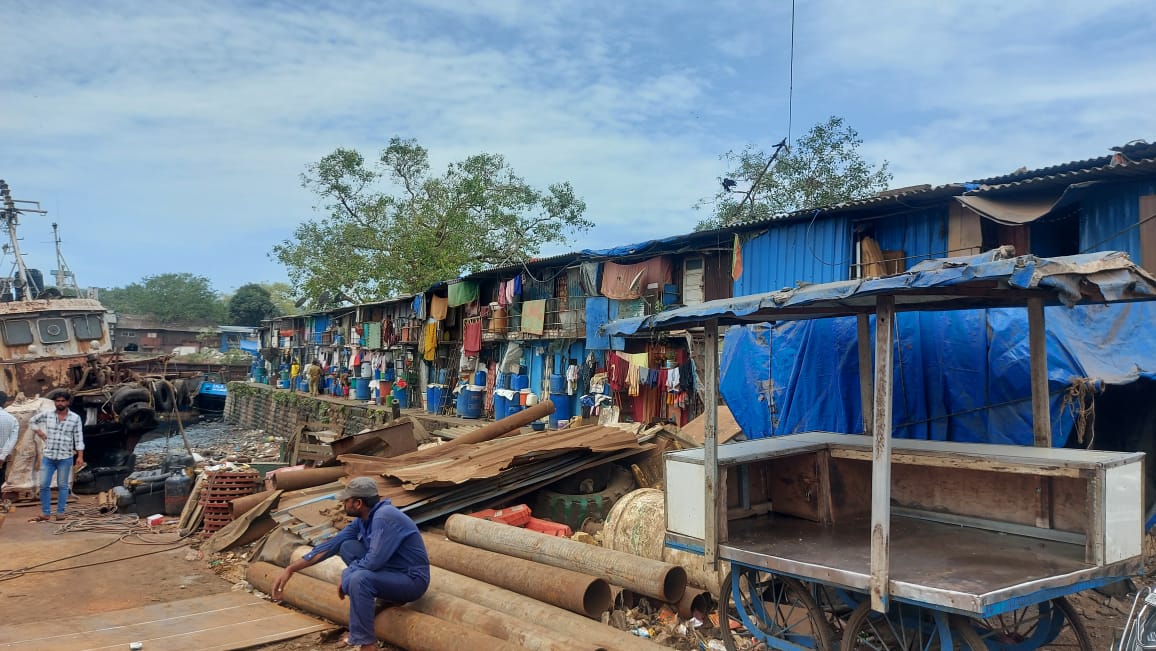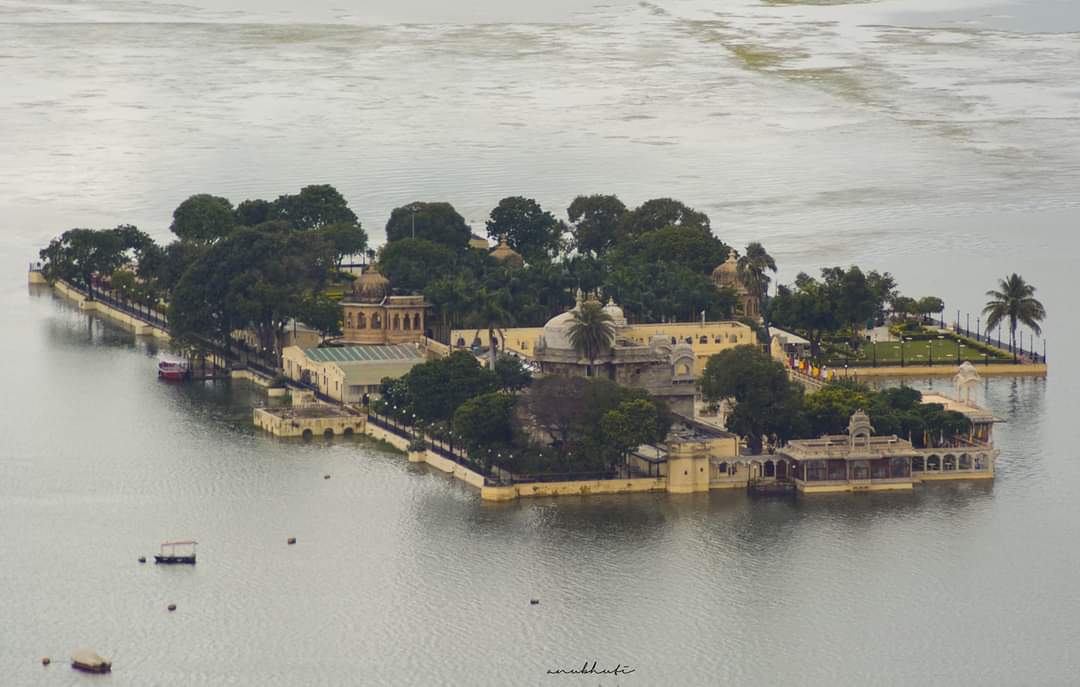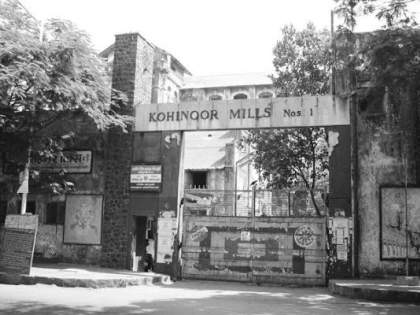The Eastern waterfront of Mumbai under the Port Trust stretches from the salt pans of Wadala in the north to the Sassoon dock at Colaba in the south. It occupies 1/8th of the land area of Mumbai. From its establishment, the port has been the gateway to India, and was a primary factor in the emergence of Mumbai as the commercial capital of the country.
The city’s expanding growth and population pressure constrained the growth of the port by the 1970s and this led to the establishment of the Nhava Sheva port across Mumbai Harbour in Navi Mumbai in the late eighties in order to handle the growing container traffic. The shifting of the port from the island city to a region across the harbour left behind a space that remains like a remnant of the port. The current landscape is dotted with large, derelict and unused infrastructure which gives an overall sense of desolation.
But this feeling is a fleeting one, and on delving deeper into the site I attempted to understand the urban life produced in an area that is generally deemed as unsafe and shady, the different types of claims on space, the settlements that emerged as a result of a once-active port and the changing nature of the industrial landscape.
Studying one particular stretch of Darukhana- the finger-like projection of Kolsa Bunder through the lenses of history, politics, livelihood and everyday inhabitation enabled me to attempt to interrogate the life that now exists on this contested piece of land through the stories of men and women that dwell and/or work on the former port.
The Eastern waterfront has been a highly contested land for decades with parts being partially owned by the government as well as private companies and some owned by the Port trust. In the past two decades, various organisations like the UDRI (Urban design research Institute), the Bombay Port trust and HCP (Bimal Patel) conducted research on the waterfront and have proposed complete revamping or ‘revitalization’ of the portlands. The Rani Jadhav committee report of 2014 (Bombay Port trust) proposed a complete top-down approach towards the development of the eastern waterfront by terming it as ‘economic revitalization’ of the unregulated slums and unplanned growth of the informal sector by calling it ‘wasteful’.
The report strongly suggests that much of the land is under sub-optimal use and under-utilised by the port. The HCP office looks at the waterfront as an available piece of land which has the potential to fulfil the city’s need for more open public spaces. Their perspective comes off as a touristic , recreational site and proposes a complete raze-down approach of the existing. These institutions fail to recognise the existing fabric of the place which holds within them people who work and live through the vagaries of everyday life on the (ex) port.
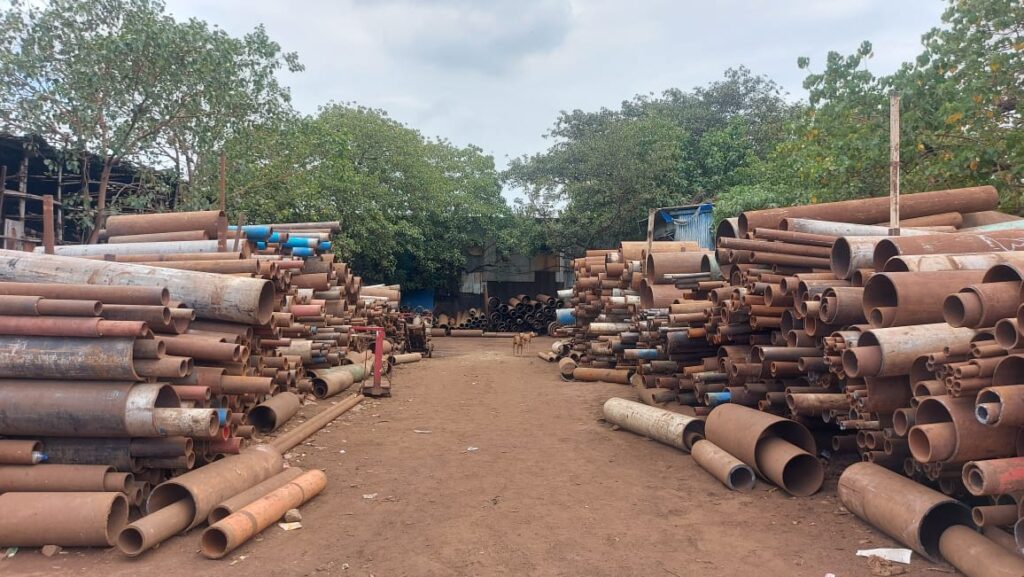
While the UDRI studied the waterfront through a statistical angle by researching demographics through the lens of religion,origin of migration and land use patterns, it did not acknowledge the stories of the dwellers and workers who can no longer be termed migrants since they have become native to the port, having lived through the transformation the area has undergone.
James Holston in his essay titled ‘Spaces of Insurgent Citizenship’ states that the CIAM model of urban development relies on a “ subjective transformation of existing conditions” and uses techniques of shock to force a change. “These techniques emphasise de-contextualization, defamiliarization, and dehistoricization. Their central premise of transformation is that the new architecture/urban design would create set pieces within existing cities that would subvert and then regenerate the surrounding fabric of denatured social life.” Basically indicating that the introduction of a new building type within the existing framework of the city would affect it as a whole by transforming it. This would stand true in the case of the HCP proposal which aims to create (and thus apparently reclaim) large public areas and gentrify the Eastern waterfront.
My argument lies in the proposition that these livelihoods of the port have always existed under a state of precarity and continue to do so considering the proposals that have been projected. As an urbanist or an architect, I argue that it is necessary to study a place ethnographically in order to design for it. Ethnographic research gives an insight into the culture and practices followed by the people, in the context of the real environment and thus helps to plan and design with a certain degree of relevance to the space.
History is political. It has always been written through the lens of a political agenda and thus it is simply not reliable enough to know in depth about a given place. The present emerges from the stories of people who live and breathe the air of the neighbourhood.
Below is an attempt at a thick description of a hydraulic pipe factory in Kolsa Bunder through a conversation with Ashim Chacha who has been working here for the past 17 years.
‘The mechanical whirring noise of the wheel is a constant background to anyone entering the workshop or the usual passerby.The hydraulic metal pipes are sliced by the wheel evenly but the pipe is required to be pushed ahead every other minute manually such that the given marked length comes under the wheel. Ashim chacha works and lives in this hydraulic slicer factory on Kolsa Bunder.The workshop is a landscape of metal pipes, long and slender, occupying almost the entire length of the workshop.The ground is barely visible and one has to walk over this spread out floor of pipes. The shipment of pipes arrives from various sites in Mumbai and the pipes are sliced as per required length for hydraulic systems of water pumps for ships as well as on-ground systems and shipped to Delhi, Gujarat etc.
Ashim chacha works at the machine as well as collects shipments of pipes and helps unload them from the trucks.Currently, only three-four people are employed with the business as there is not much work. The workshop houses at least seventeen to eighteen workers at night. Most of them work in other factories nearby and get work as per need, but they dwell in the hydraulic workshop. The sheth (owner) of the workshop had suggested such an arrangement of sleeping at the workshop as the workers that migrated could not afford to pay rent or had arrived without family, thus making it difficult to find accommodation.All the workers living here have migrated from towns in Uttar Pradesh.The walls are lined with several ‘khaats’. One pipe is welded horizontally throughout the length of the factory and the khaats are hung on this pipe.
A cabin constructed on a height within the factory becomes the kitchen for the workers. The night time meal is regularly cooked here while lunch is often served at a khanaval or near the factory where they respectively work.This cabin also becomes a collective space to keep everyone’s personal belongings. In this case, leisure is resorted to spending time ‘outside’ the dwelling as well as the place of work. The outside here simply refers to the road outside the workshop or the factories where they work. A parked motorbike or two, the corner paan-wala or the edges of roads become the primary spaces of rest, breaks or leisure.
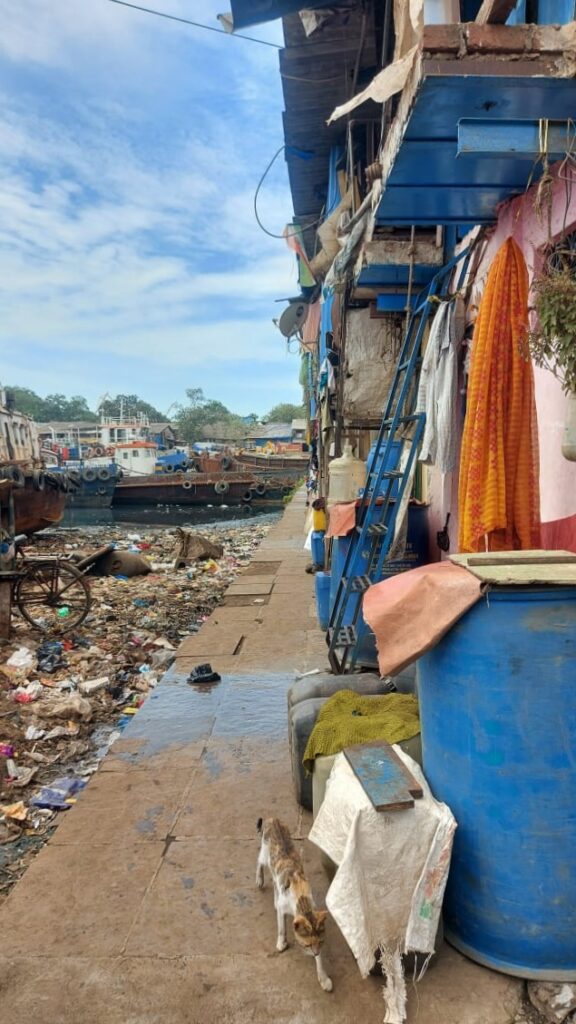
Ashim chacha and his fellow dwellers wake up around 7 to 8am in the morning and go to the nearest public toilet to freshen themselves. Often, they have chai in the workshop and leave for their respective factories by 10am. The entire day is spent manning the machine and looking after other requirements in the shed. Here the idea of home is simply a space to rest once the work day is over. But simultaneously, it is also a space of work.’
I understand two important things from my conversation (and observation) here, one that the idea of dwelling is unbounded in a setting where economic restraint is the key factor, and two, that despite the absence of any planned spaces or intervals in a worker’s life, he will find ways to practise leisure. In the future, if given an opportunity to design, I will thus make use of these close observations of the environment in order to bring about a change that is relevant.
The crucial question for us to consider is how do we include this ethnographic research in planning and think of the possibilities for change encountered in existing social conditions.
Holston states “ What planners need to look for are the emergent sources of citizenship-and their repression-that indicate this invention. They are not hard to find in the wake of this century’s important processes of change: massive migration to the world’s major cities, industrialization and deindustrialization, the sexual revolution, democratisation, and so forth.
This disruption is the source of insurgent citizenship and the object of a planning theory that includes the ethnographic present in its constitution. “



